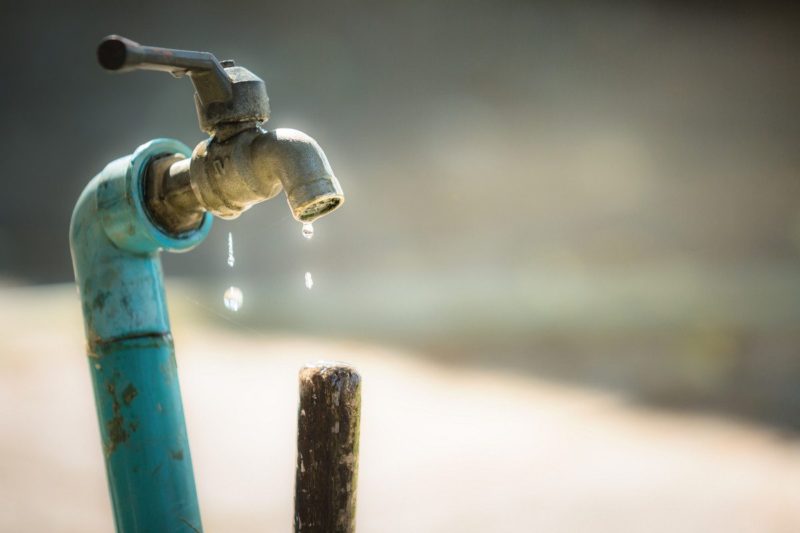On World Water Day, a Spotlight on U.S. Public Water Systems
A continuing water crisis in Flint, Michigan, is shattering the perception that only residents of poor countries are denied access to this basic human right.

Editor’s note: This article has been updated to reflect a change in the estimates made by Fitch Ratings, which originally reported that replacing an estimated six million lead service lines across the country could cost upwards of $275 billion. Fitch has since updated that estimate to “a few billion to $50 billion.”
Tuesday is World Water Day, that time of year when the media reminds us that 663 million people globally— about one in ten people—lack access to safe drinking water, the majority of them in the developing world.
This year the spotlight is shining just as harshly on the United States, where a continuing water crisis in Flint, Michigan, is shattering the perception that only residents of poor countries are denied access to this basic human right.
Some 100,000 residents in Flint, a predominantly Black city, are still being forced to drink, cook with, and bathe their children in bottled water, after corrosive water from the Flint River leached lead from pipes, joints, and fixtures into the city’s water supply.
The crisis began in April of 2014 when the city, under emergency management, switched its water source from Lake Huron to the toxic Flint River. Families immediately began to see signs of lead poisoning like hair loss, rashes, and cognitive impairments in their children, but city and state officials downplayed the extent of the problem for well over a year.
Under mounting pressure, including a heated congressional hearing last week in which Michigan Gov. Rick Snyder (R) and Environmental Protection Agency (EPA) Administrator Gina McCarthy came under fire from Democrat and Republican lawmakers for failing to prevent the disaster, Snyder released a 75-point action plan Monday to deal with the emergency.
Some key tasks include offering “professional support and case management” to children under six years of age with high blood lead levels, adding three additional Child and Adolescent Health Centers in the city, and having trained professionals carry out cognitive and developmental screening throughout Flint.
This MLive article noted that the governor’s goals include replacing 30 water service lines in an effort to contribute to Flint Mayor Karen Weaver’s $55-million Fast Start program. But there are an estimated 15,000 lead service lines in Flint, Laura Bliss recently wrote for CityLab, which reports “only a handful of homes” have been serviced. The mayor has asked the Michigan legislature to release a minimum of $25 million for the first phase of the plan, as well as an additional $220 million for a larger plan that would fund health care and safe water infrastructure. But according to MLive, Flint “is still awaiting state legislators to appropriate $165 million” toward meeting these needs.
And Flint is not the only city that is struggling. An investigation by USA Today released on March 11 revealed that an additional 2,000 water systems across all 50 states have shown signs of “excessive” lead levels in the past four years, impacting an estimated six million people. Roughly 350 of those systems deliver water to schools and day-care centers, while at least 180 systems violated federal regulations by neglecting to alert consumers about high lead levels, the investigation found.
Disturbingly, some of the highest reported lead levels were found in schools and day cares. USA Today’s exposé noted, “A water sample at a Maine elementary school was 42 times higher than the EPA limit of 15 parts per billion [ppb], while a Pennsylvania preschool was 14 times higher, records show. At an elementary school in Ithaca, N.Y., one sample tested this year at a stunning 5,000 ppb of lead, the EPA’s threshold for ‘hazardous waste.’”
Meanwhile, water tests conducted last week in Newark, New Jersey, found that 30 of the district’s 67 schools had lead levels higher than the EPA’s safety threshold of 15 ppb, the New York Times’ editorial board reported on March 19. (The threshold itself, some say, is arbitrary, given that the EPA’s own regulations clearly state that the “maximum contaminant level goal for lead in drinking water [is] zero because lead is a toxic metal that can be harmful to human health even at low exposure levels.”) According to the Times’ editorial, Newark district officials were aware of the problem for well over a decade.
In Chicago, where lead service lines feed an estimated 80 percent of properties according to this article in the Chicago Tribune, “city officials still do little to caution Chicagoans about the potential health risks” of lead levels in the water supply, even though a 2013 federal study found that the city’s existing testing protocols likely miss “high concentrations of lead in drinking water.”
Earlier this month, the Detroit Free Press reported that replacing an estimated six million lead service lines across the country could cost from “a few billion to $50 billion.” Quoting Fitch Ratings, an international ratings agency, the article also noted that the EPA’s latest estimates for improving the entire water sector ran into about $385 billion through the year 2030, although this projection only included a plan for partial replacement of lead pipes, rather than a complete overhaul.
